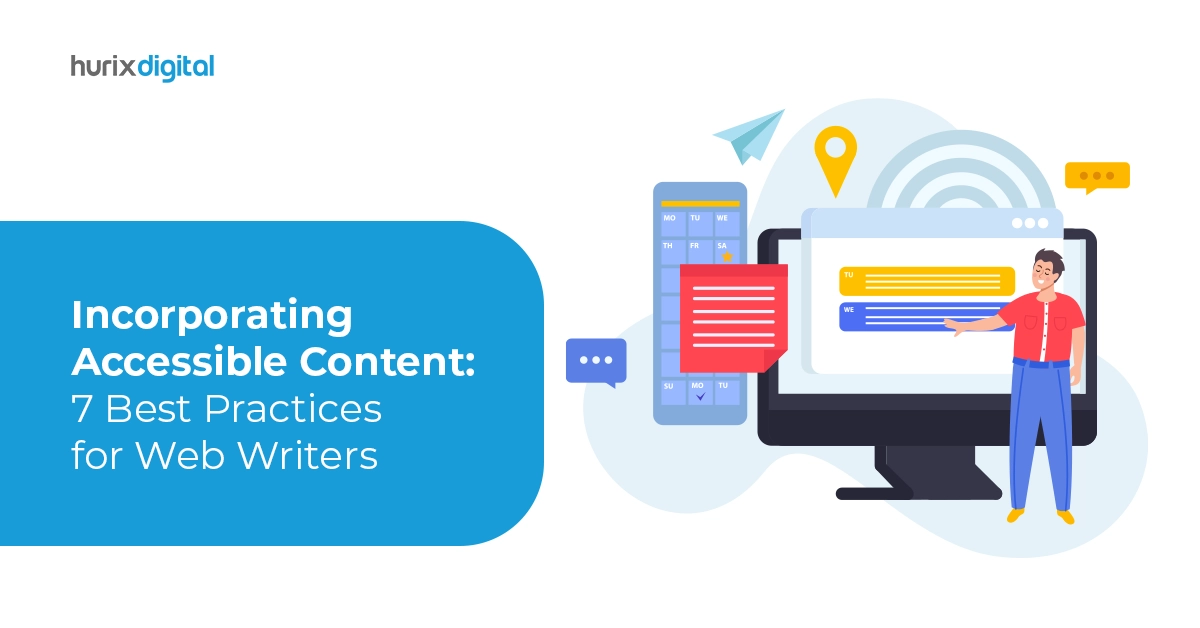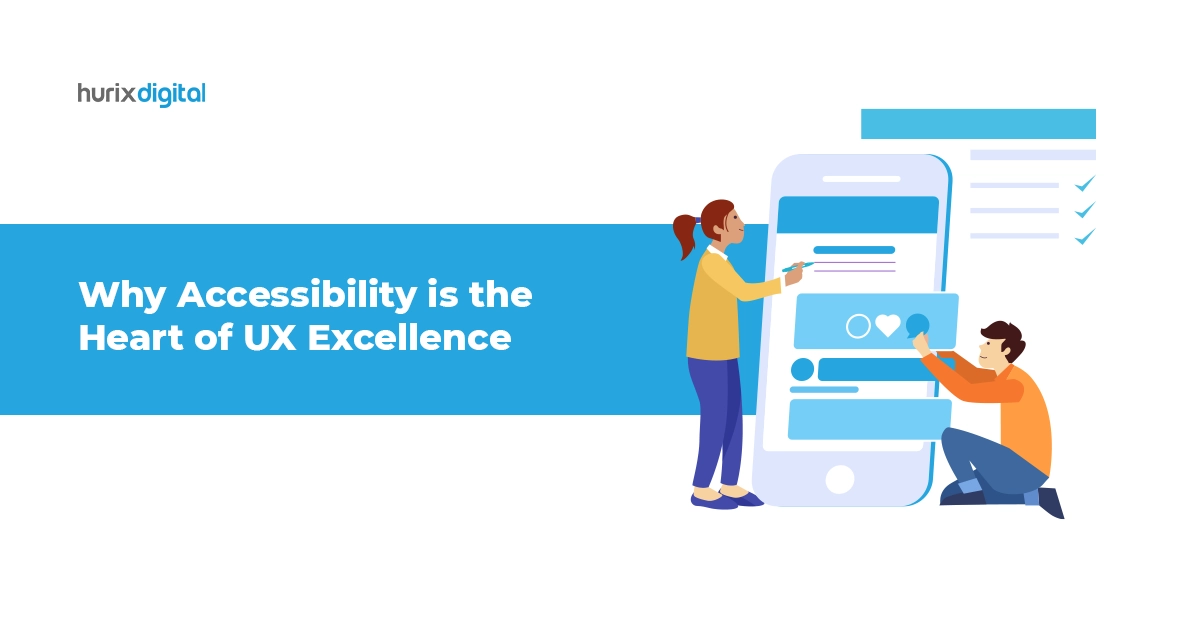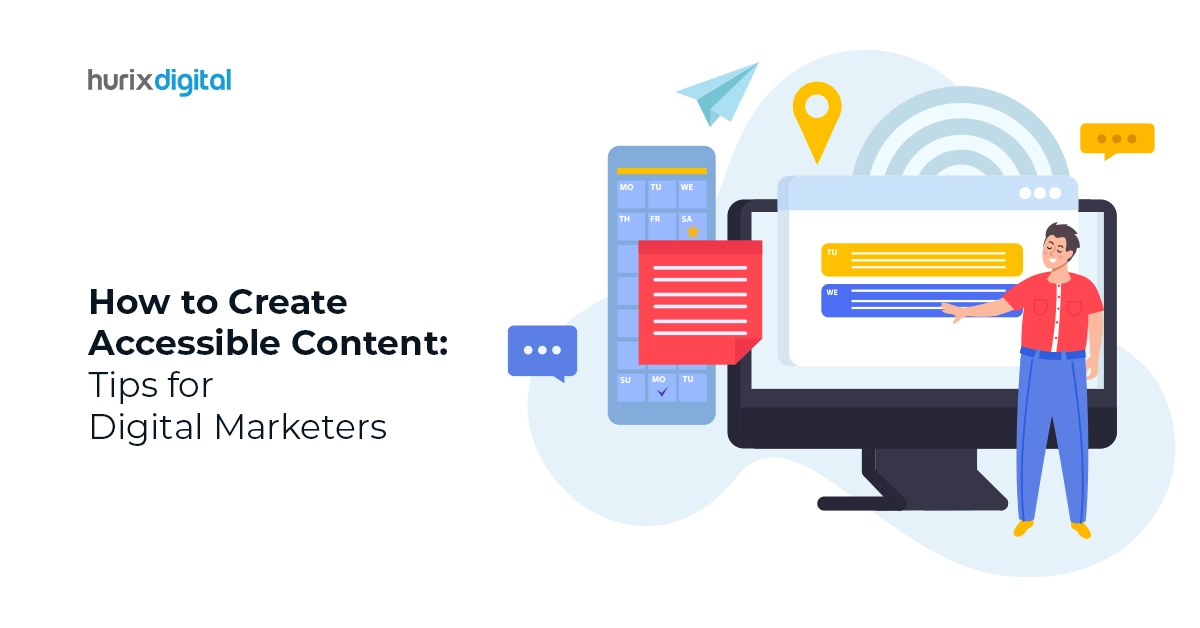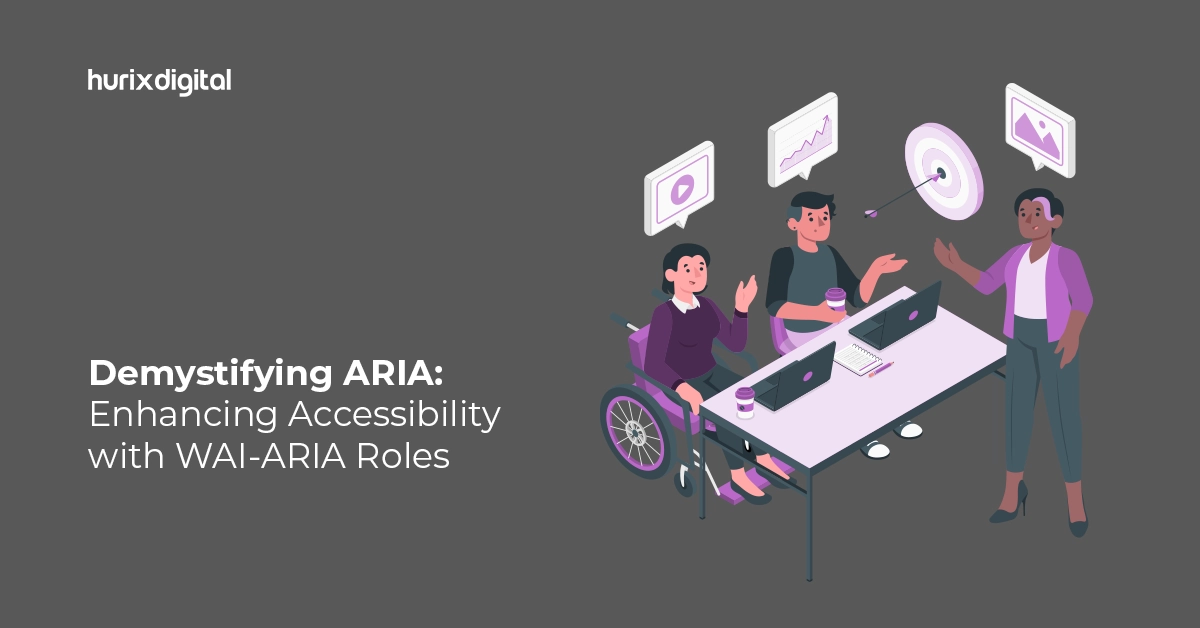Summary
This blog highlights essential strategies for creating inclusive web content, including compliance with accessibility standards, user-friendly design, and alt text implementation. Partnering with Hurix Digital can further enhance your website's accessibility and reach.
In today’s digital environment, internet accessibility has become a critical part of creating web content. With the increasing emphasis on inclusion and user experience, web authors must prioritize accessibility standards to ensure that their content is accessible to all users, including those with disabilities. In this blog, we explore seven best practices for web writers to improve accessibility and promote engagement.
Table of Contents:
- Why Incorporating Accessible Content is a Must?
- Seven Best Practices for Web Writers to Enhance Accessibility and Promote Inclusivity
1. Understanding Web Accessibility Standards
2. Prioritizing User-Friendly Website Design
3. Incorporating Visual Impairment Accessibility
4. Implementing Alt Text
5. Complying with WCAG Guidelines
6. Ensuring Mobile Accessibility
7. Partnering with Hurix Digital for Expert Assistance - Conclusion
Why Incorporating Accessible Content is a Must?
Incorporating accessible content is crucial as it ensures that information is available to everyone, regardless of their abilities. By making content accessible, organizations can reach a wider audience, including individuals with disabilities, who may otherwise face barriers in accessing information. Moreover, it aligns with legal requirements and ethical considerations, promoting inclusivity and equality. Accessible content also enhances usability for all users, improving user experience and fostering a positive reputation for the organization. Ultimately, prioritizing accessibility not only benefits individuals with disabilities but also strengthens overall communication and engagement.
Seven Best Practices for Web Writers to Enhance Accessibility and Promote Inclusivity
1. Understanding Web Accessibility Standards
Web accessibility refers to the practice of ensuring that websites are designed and developed for use by people of all abilities. This includes compliance with accessibility standards such as the Americans with Disabilities Act (ADA) and WCAG (Web Content Accessibility Guidelines). By becoming familiar with these standards, web authors can ensure that their content meets accessibility standards.
2. Prioritizing User-Friendly Website Design
A user-friendly website is key to providing an inclusive browsing experience. Web writers should collaborate closely with designers and developers to create websites that are intuitive and easy to navigate for all users, regardless of their abilities. Implementing responsive web design and optimizing for mobile accessibility are essential steps in ensuring that content is accessible across various devices and screen sizes.
3. Incorporating Visual Impairment Accessibility
Accessibility for the visually impaired is an important aspect of creating web content. Web writers should pay special attention to adding features such as image captions, descriptive captions, and appropriate colour contrast to accommodate visually impaired users. By providing alternative descriptions for visual content, authors can ensure that all users can access and understand the information presented on the site.
Also Read: Best Practices of Web Accessibility for Developers and Designers
4. Implementing Alt Text
Alternative text or alternative text is a summary description of an image that screen readers read aloud to the visually impaired. Web writers should add descriptive captions to all images on their websites to provide context and convey important information to users using screen readers. Caption should be clear, concise and relevant to the image, which improves the overall accessibility of the content.
5. Complying with WCAG Guidelines
The WCAG guidelines provide a comprehensive set of recommendations for making web content more accessible to users with disabilities. Web writers should familiarize themselves with these guidelines and incorporate them into their content creation process. By adhering to WCAG standards, writers can ensure that their content is perceivable, operable, and understandable for all users, regardless of their abilities.
6. Ensuring Mobile Accessibility
In an increasingly mobile-centric world, ensuring mobile accessibility is essential for reaching a diverse audience. Web writers should optimize their content for mobile devices, considering factors such as touch screen navigation, responsive design, and mobile-friendly layouts. By prioritizing mobile accessibility, writers can provide a seamless browsing experience for users accessing the website on smartphones and tablets.
7. Partnering with Hurix Digital for Expert Assistance
At Hurix Digital, we understand the importance of digital accessibility and are committed to helping businesses create inclusive and user-friendly websites. Our team of experts specializes in web accessibility solutions, offering services such as accessibility audits, remediation, and ongoing support. Whether you’re looking to ensure ADA compliance or enhance the accessibility of your website, Hurix Digital is here to help.
Incorporating accessible content into your website is not just a legal requirement but also a moral imperative. By following these best practices for web writers, you can create a more inclusive online experience for all users, regardless of their abilities.
Also Read: Accessibility and Figures: Best Practices for Creating Accessible Content
Conclusion
Ready to enhance the accessibility of your website? Contact Hurix Digital today to learn how our accessibility solutions can help you reach a wider audience and create a more inclusive online presence.











